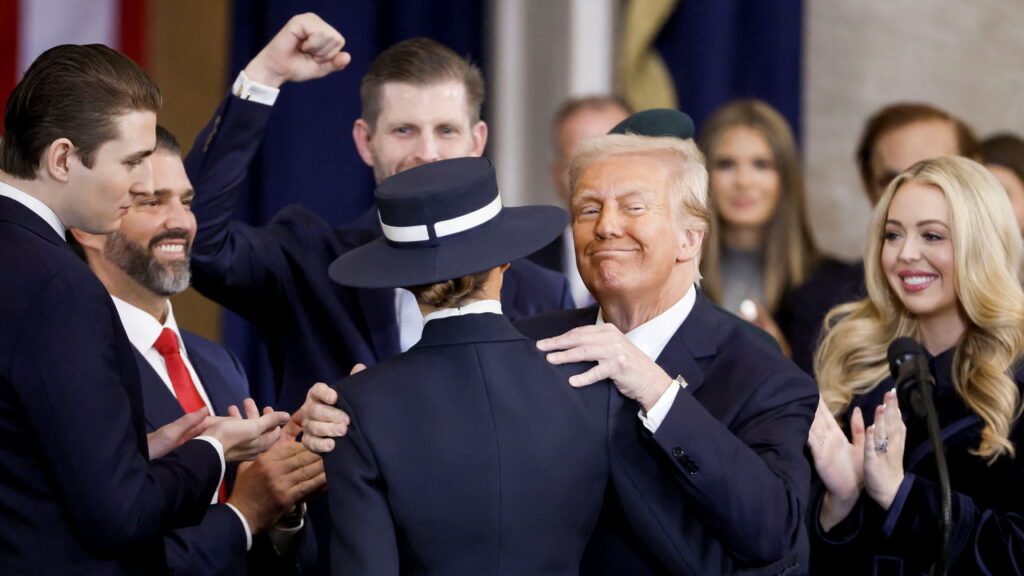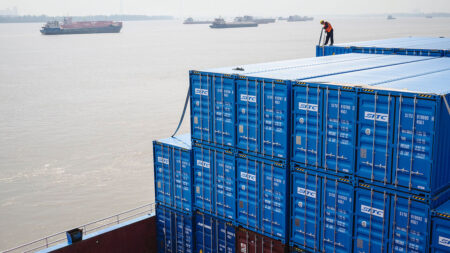So begins Donald Trump’s tumultuous and controversial journey through global trade policies, famously marked by his tariff roller-coaster, a ride that many analysts and economists believe could have significant repercussions for the international economy. When he assumed the presidency, expectations were high that he would immediately impose stringent tariffs on imports, particularly targeting countries he accused of unfair trading practices. However, on his very first day in office, Trump surprised both supporters and critics alike by opting for a different approach. Instead of taking drastic action, he issued a presidential memorandum that called for an extensive review of existing trade agreements and practices deemed unfair.
This initial move appeared to signify a more cautious approach to trade policy from Trump, at least in the initial phases of his presidency. The lack of immediate tariffs prompted a wave of optimism amidst government offices and on stock exchanges globally. Investors reacted positively; foreign currencies appreciated, and stock markets experienced a rally as hope prevailed that perhaps the intense trade wars feared by many could be avoided. It was seen as a prudent decision that could pave the way for diplomatic negotiations rather than confrontations, allowing room for discussions about trade imbalances and fair practices.
Yet, this sense of relief was relatively short-lived. Underneath this initial calm, the fundamentals of Trump’s trade philosophy were intensely protectionist. He had long voiced strong criticism against countries like China, Mexico, and Germany, accusing them of exploiting the United States while failing to reciprocate fairly in trade agreements. As his presidency progressed, the rhetoric grew increasingly aggressive, and it became evident that the review called for in his memorandum was not simply a bureaucratic formality—it was a precursor to an array of tariffs and trade barriers.
Months later, the roller-coaster took a severe plunge as Trump began to implement tariffs on a wide range of goods, ostensibly aimed at correcting trade imbalances and protecting American industries. The administration targeted steel and aluminum imports, deeming these a threat to national security. This decision created immediate backlash; affected nations retaliated with their own tariffs on American goods, leading to a tit-for-tat trade war that escalated quickly. Farmers, manufacturers, and consumers felt the impact of the increasing costs of products, and discomfort grew among citizens as price hikes affected their daily lives.
In the midst of this ever-changing situation, Trump’s team attempted to strike deals that would benefit American businesses. The United States-Mexico-Canada Agreement (USMCA) emerged as a significant negotiation victory, replacing the North American Free Trade Agreement (NAFTA), though whether it truly benefited American workers in the long run is still debated. The continuous tug-of-war between protecting domestic industries and ensuring beneficial international trade agreements became a hallmark of the Trump administration, raising questions about the effectiveness and sustainability of his policies.
As the presidency continued, the resulting anxiety was palpable. Economists cautioned that the unintended consequences of the tariffs could lead to reduced global economic growth. The global supply chains, which had been optimized for efficiency, now faced disruptions. Business owners were caught in uncertainty, with many pausing investment decisions due to fear of destabilizing trade conditions. Consumers, on the other hand, bore the brunt of rising prices, as many goods became more expensive due to tariffs imposed on them.
In summary, what began as a restrained examination of trade practices quickly morphed into a contentious and volatile landscape characterized by aggressive tariffs and extensive market reactions. The roller-coaster nature of Trump’s tariff policies left many analysts wondering about the long-term implications for both the U.S. economy and the international community at large. The ongoing debates surrounding the efficacy and ethics of these policies continue to ripple through various sectors of the economy and influence the political sphere. It is a complex narrative still unfolding, with far-reaching consequences that will shape the future of international trade for years to come.











